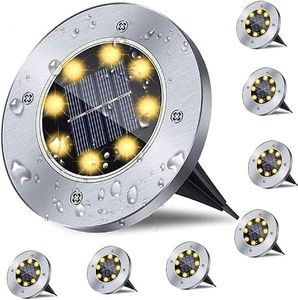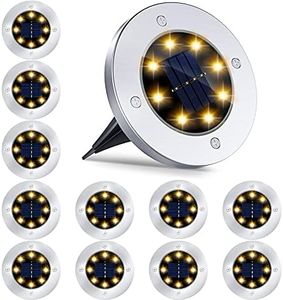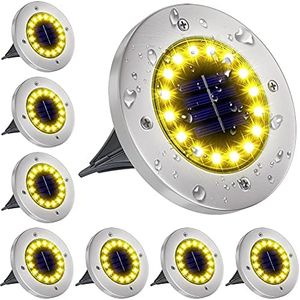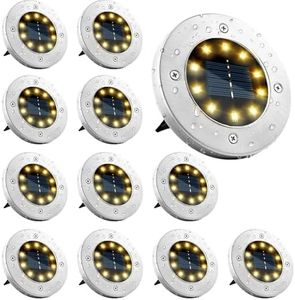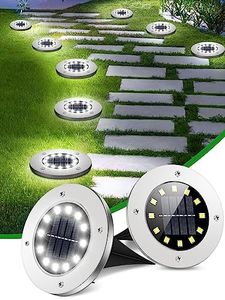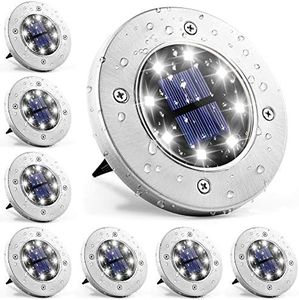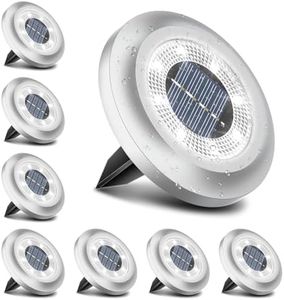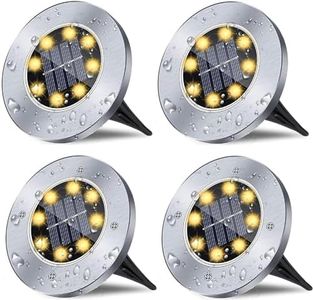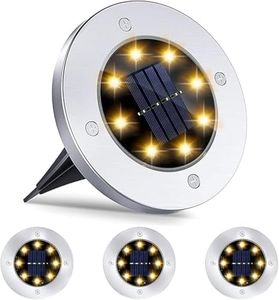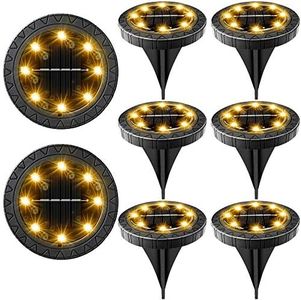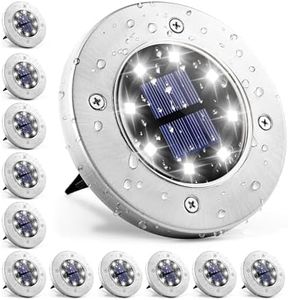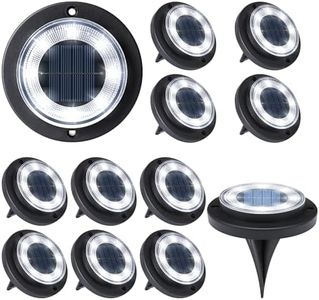We Use CookiesWe use cookies to enhance the security, performance,
functionality and for analytical and promotional activities. By continuing to browse this site you
are agreeing to our privacy policy
10 Best Solar Disk Lights
From leading brands and best sellers available on the web.Buying Guide for the Best Solar Disk Lights
Solar disk lights are compact, ground-level lighting solutions that use solar energy to illuminate outdoor spaces such as gardens, pathways, or patios. Choosing the right solar disk lights can greatly enhance the safety, aesthetics, and functionality of your outdoor areas. When comparing different options, it's important to understand several key specifications so you can select lights that best fit your needs, whether you prioritize brightness, durability, or ease of installation.Brightness (Lumens)Brightness, measured in lumens, tells you how much light the solar disk emits. Brighter lights improve visibility and highlight landscapes, while softer lights provide subtle ambiance. Typical solar disk lights range from about 10 to 40 lumens per disk. Lower lumens (10-20) are good for gentle decorative lighting, mid-range (20-30) suits pathway lighting, and higher lumens (30+) are best if you want clear illumination for security or to brighten larger spaces. Decide how much illumination you need based on where and why you're installing the lights.
Battery Capacity and RuntimeBattery capacity determines how long the lights stay on after charging during the day. It's usually measured in milliamp hours (mAh). Lower capacity batteries (400-600mAh) might run for about 6 to 8 hours, while higher capacities (600-1200mAh) can last 8-12 hours or more. If you need the lights to last all night for safety or aesthetics, look for longer runtimes and higher battery capacities. Consider your region’s sunlight exposure too, as less sun means longer battery life is more important.
Solar Panel EfficiencySolar panel efficiency indicates how well the solar disk converts sunlight into electricity. More efficient panels charge the battery faster and work better during cloudy or shaded conditions. Basic panels may take all day to charge, while higher-quality panels need less time and collect more energy even with less sunlight. If your garden or pathway doesn’t get strong direct sunlight all day, prioritize higher efficiency for reliable nighttime performance.
Build Quality and Weather ResistanceBuild quality and weather resistance reflect how well the lights withstand outdoor conditions such as rain, snow, heat, and dust. Look for indicators like ‘IP’ ratings; for example, IP65 or higher means the light is resistant to dust and water jets and suitable for most outdoor weather. Cheaper units with poor sealing might fail quickly, especially in harsh climates. Choose sturdier models with better ratings if you live in an area with frequent rain, snow, or extreme temperatures.
Installation TypeSolar disk lights can be installed by pushing them into the ground, mounting them on a surface, or using adhesive. Ground spike installations are simplest for gardens and lawns, while mounting is suitable for decks or stairs. Adhesive options work on smooth surfaces. Think about where you plan to use the lights; a spike model is best for grass, while a surface mount is ideal for wood or stone walkways.
Automatic FeaturesMany solar disk lights include automatic on/off functionality using light sensors, meaning they turn on at dusk and off at dawn without manual effort. Some basic models require switching on manually, which can be inconvenient. Motion sensors are rare but useful for driveways or extra security. If you desire a ‘set and forget’ solution, prioritize fully automatic options to maximize convenience.
